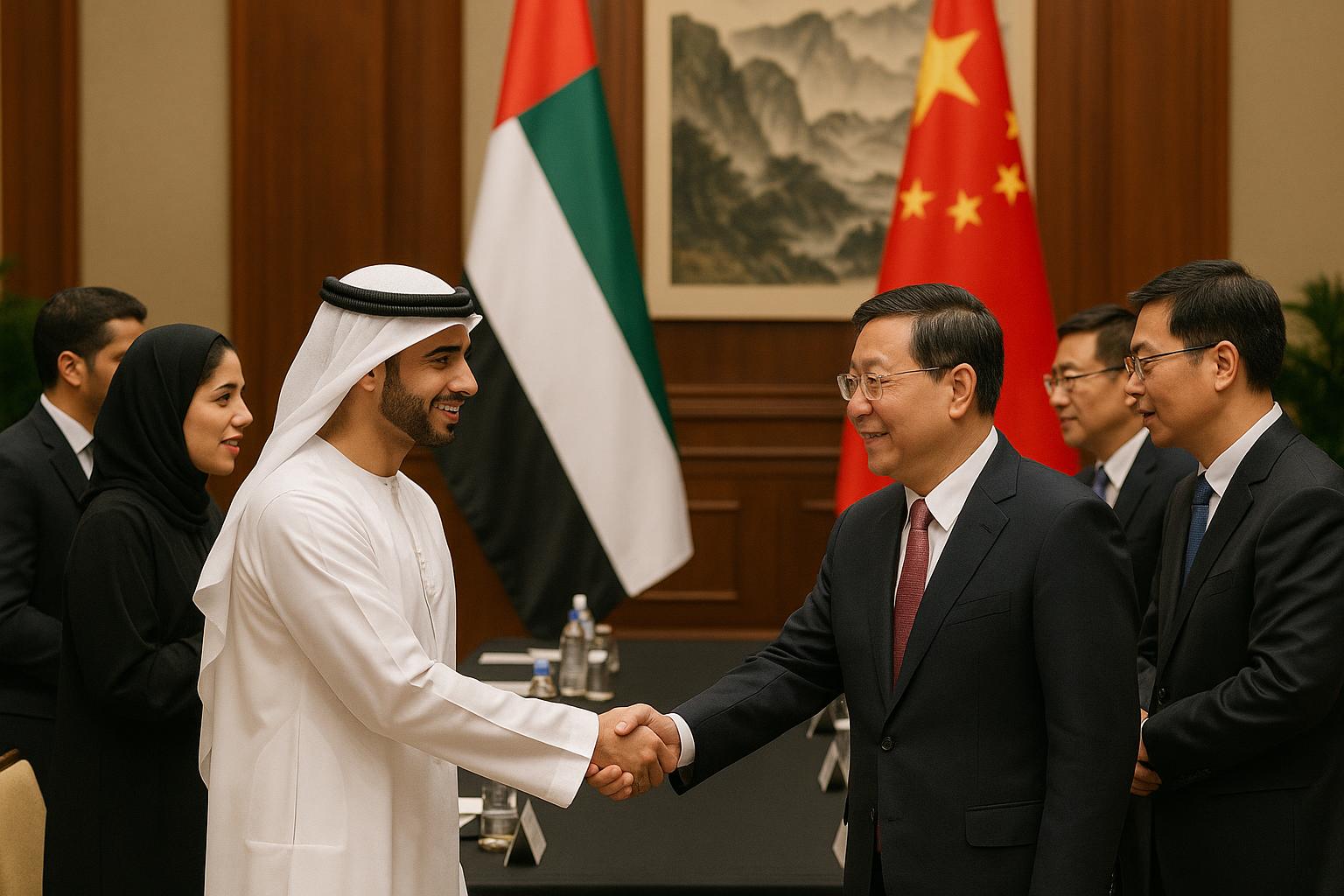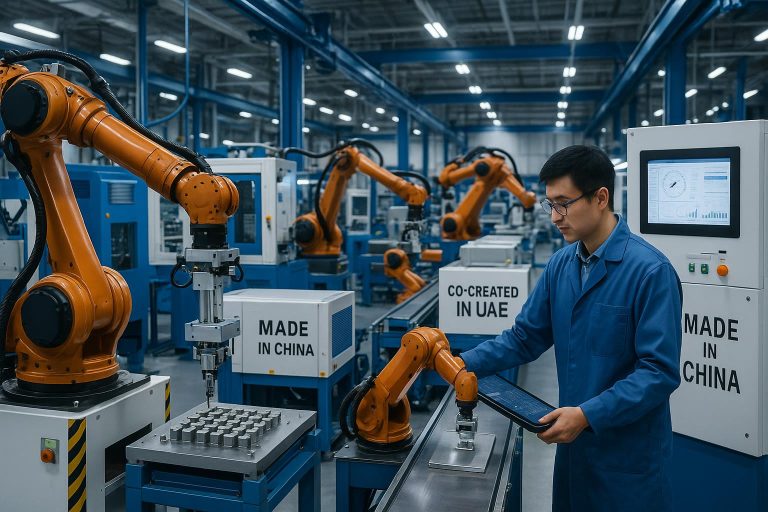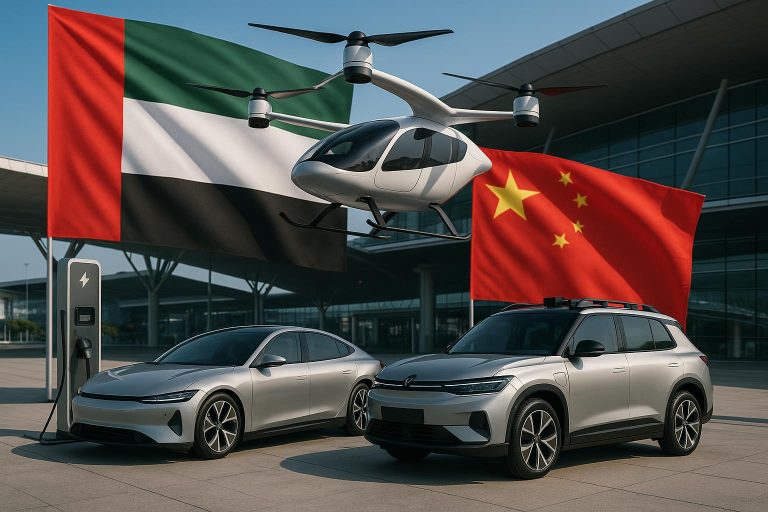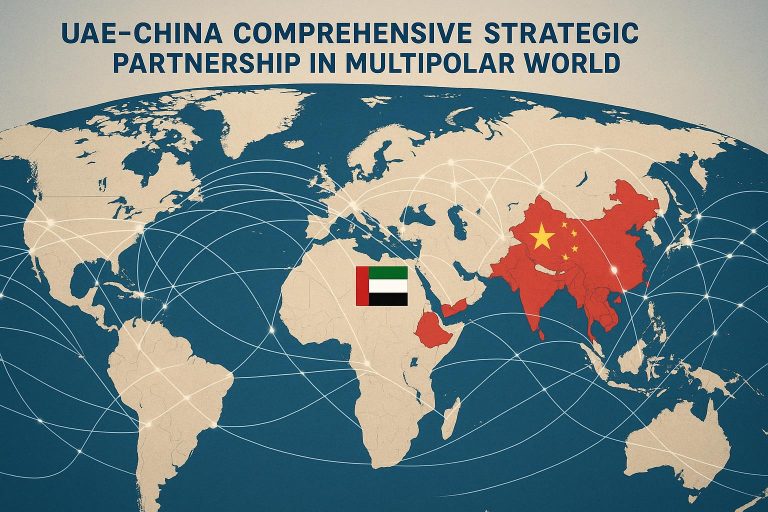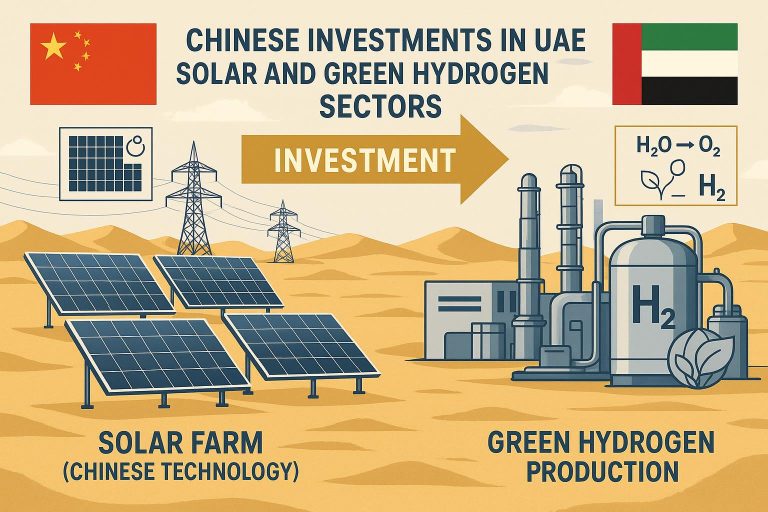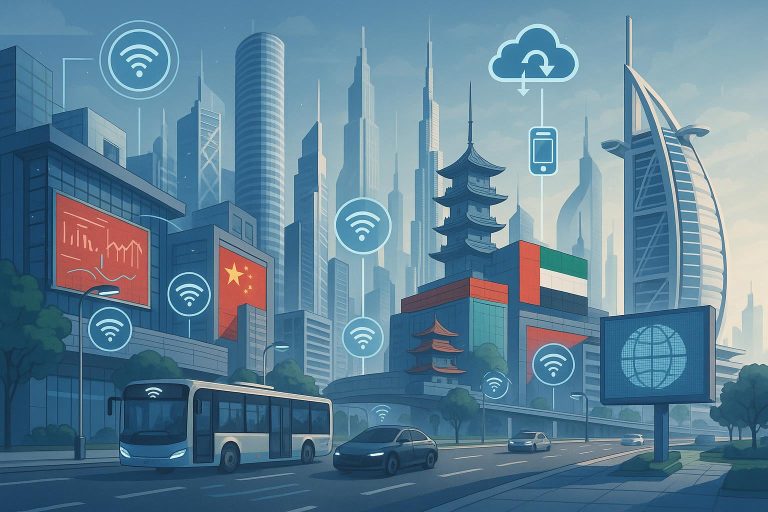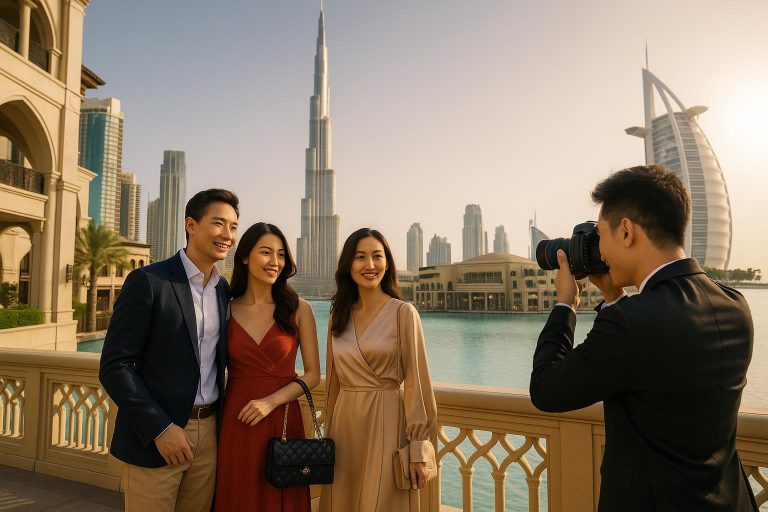More Than Trade: How Cultural Exchange and Soft Power are Deepening the UAE-China Economic Partnership.
Executive Summary
The economic partnership between the United Arab Emirates (UAE) and China has transcended traditional trade and investment, evolving into a comprehensive strategic alliance significantly bolstered by robust cultural exchange and strategic soft power initiatives. This deepening relationship is evident in remarkable economic indicators, with bilateral trade reaching a record $101.8 billion in 2024, marking an 800-fold growth since 1984. The UAE stands as China’s largest export market in the Middle East and its second-largest trading partner in the region, while China remains the UAE’s foremost trading partner. This vibrant commercial landscape is further underscored by the presence of over 15,000 Chinese firms operating within the UAE and a substantial increase in UAE investments in China, which reached $4.5 billion by the end of 2023—a 96% rise from the previous year. Beyond these impressive figures, the partnership is cemented by a 2018 Comprehensive Strategic Partnership framework, regular high-level diplomatic engagements, and extensive cooperation across vital sectors such as energy, infrastructure, technology, and finance. This article critically analyzes how cultural diplomacy and soft power are not merely supplementary but foundational elements fostering mutual trust and understanding, thereby underpinning and accelerating the economic integration between these two dynamic nations.
Introduction
In an increasingly interconnected yet complex global landscape, the nature of international relations is rapidly evolving beyond conventional economic metrics. While trade volumes and investment flows remain crucial indicators of bilateral strength, the profound influence of cultural exchange and soft power in shaping enduring partnerships is becoming undeniably clear. The relationship between the United Arab Emirates and China exemplifies this modern paradigm, showcasing a strategic alliance that is uniquely strengthened by deliberate efforts in cultural diplomacy and the projection of soft power. This article posits that the UAE-China economic partnership is not merely a transactional arrangement but a deeply interwoven tapestry, uniquely fortified by robust cultural exchange and strategic soft power initiatives. These elements foster a bedrock of trust and mutual understanding, which in turn underpins and significantly accelerates bilateral investment and cooperation across a multitude of sectors.
Historically, the ties between the UAE and China have witnessed an extraordinary trajectory of growth. From modest beginnings, bilateral trade has surged dramatically, achieving an 800-fold increase since 1984 to reach an unprecedented $101.8 billion in 2024. This rapid expansion underscores a relationship that has consistently adapted and broadened its scope. The concept of soft power, defined as the ability to attract and co-opt rather than coerce, and cultural exchange, encompassing the reciprocal sharing of ideas, values, and traditions, are increasingly central to this economic diplomacy. By exploring the current landscape of cooperation, identifying strategic growth drivers, acknowledging critical challenges, and highlighting specific case studies, this analysis aims to illuminate how these non-economic factors are not just enhancing but fundamentally deepening the economic partnership between the UAE and China. The subsequent sections will delve into these facets, providing a comprehensive understanding of this multifaceted and forward-looking alliance.
The Current Landscape of Bilateral Cooperation
The UAE-China economic relationship is marked by robust trade and investment, underpinned by a comprehensive strategic partnership. Bilateral trade reached $101.8 billion in 2024, an 800-fold increase since 1984. The UAE is China’s largest export market in the Middle East and its second-largest regional trading partner, while China remains the UAE’s largest trading partner. Over 15,000 Chinese firms operate in the UAE, and UAE investments in China grew 96% to $4.5 billion by end of 2023.
This partnership is solidified by the 2018 Comprehensive Strategic Partnership and the UAE-China Investment and Economic Cooperation Working Group, fostering collaboration through regular high-level diplomatic engagements and strategic agreements.
Cooperation spans diverse sectors:
- Energy & Clean Energy: Investments in solar and wind power, including the Masdar-China Silk Road Fund MoU for BRI renewable projects.
- Infrastructure & Logistics: The COSCO terminal at Khalifa Port, China-UAE Industrial Capacity Zone, and recent developments like JINGDONG Property’s Middle East logistics hub in Dubai and JD.com’s smart supply chain technologies position the UAE as China’s Gulf gateway.
- Technology & AI: A $5 billion UAE-China partnership focuses on AI, renewable energy, and infrastructure. G42 and Digital Dubai actively explore advanced technologies.
- Trade & Free Zones: JAFZA partnerships and collaborations across emirates facilitate commerce.
- Finance & Investment: $3.1 billion in BRI projects in the UAE, cross-border investment facilitation via China’s CIPS and the UAE central bank, fintech partnerships, and ETF launches.
- Healthcare & Pharmaceuticals: Mubadala’s acquisition of UCB Pharma’s China business, medical technology, and pharmaceutical partnerships.
- Agriculture & Food Security: The Silal and China’s Shouguang Vegetable Group’s $33 million smart agricultural project and SVG’s AED 120 million Agritech facility in Al Ain highlight innovation.
- Aviation & Transportation: Enhanced connectivity through the Emirates and Air China MoU, a $1 billion deal for 350 flying taxis, and Emirates’ expanded Chinese mainland network.
- ourism & Hospitality: The 2025 China-GCC tourism trade fair in Dubai and the UAE’s target of a $1 billion tourism opportunity from China underscore growth.
- Tourism & Hospitality: The 2025 China-GCC tourism trade fair in Dubai and the UAE’s target of a $1 billion tourism opportunity from China underscore growth.
Geographically, Abu Dhabi is a primary investment hub, Dubai facilitates trade and logistics, and free zone partnerships across the emirates reinforce the UAE’s role as a strategic partner for China’s global economic outreach.
Opportunities and Strategic Growth Drivers
The UAE-China partnership is propelled by strategic opportunities that blend economic interests with cultural and soft power dimensions. China’s Belt and Road Initiative (BRI) is central, with the UAE serving as a pivotal hub. $3.1 billion in BRI projects leverage the UAE’s strategic location and infrastructure, integrating its economy into the broader Eurasian landscape.
Aligned diversification strategies, such as the UAE’s Vision 2030 and China’s dual circulation strategy, foster collaboration in new economy sectors like AI, clean energy, and advanced manufacturing. This convergence creates a foundation for innovation and sustainable development.
Cultural and educational exchange is a powerful growth driver. A growing Chinese expatriate and tourist population, educational partnerships, language programs, and cultural festivals build people-to-people connections. Tourism is a key soft power tool, with the 2025 China-GCC tourism trade fair in Dubai and the UAE’s $1 billion tourism opportunity from China highlighting its economic and cultural significance.
Soft power diplomacy, through high-level visits and joint initiatives in humanitarian aid and global governance, builds trust and enhances global standing. Public diplomacy efforts also shape a positive narrative around the partnership.
Financial integration is another key driver. Cooperation between China’s CIPS and the UAE Central Bank, fintech partnerships, and the launch of ETF products enhance financial connectivity, supporting trade and investment and laying the groundwork for future expansion.
Challenges and Critical Considerations
Despite its growth, the UAE-China partnership faces several challenges. Geopolitical dynamics require the UAE to balance its ties with China and Western allies, a complexity exemplified by tech firms like G42 navigating both markets. Astute diplomacy is essential to avoid friction.
Regulatory and legal frameworks need harmonization to protect intellectual property rights and streamline dispute resolution. Bridging cultural nuances in business practices is also crucial for smooth collaboration.
Sustainability and environmental concerns are paramount, especially for BRI projects, requiring a shared commitment to green development. Mitigating dependency risks through diversification is a prudent strategy for both nations. Finally, managing public perception and countering misinformation is vital to maintaining support for the partnership.
Case Study Spotlight: Silal and China’s Shouguang Vegetable Group
To illustrate the multifaceted nature of the UAE-China economic partnership, particularly its expansion into critical new sectors, the collaboration between Silal, Abu Dhabi’s new agricultural technology and food supply company, and China’s Shouguang Vegetable Group (SVG) offers a compelling example. This partnership transcends traditional trade, focusing on innovation, food security, and sustainable agricultural practices. The two entities have embarked on a $33 million smart agricultural project, a testament to their shared commitment to leveraging advanced technology for food production.
This initiative is not merely about importing or exporting produce; it represents a strategic investment in the UAE’s domestic food security capabilities. China’s SVG is investing over AED 120 million (approximately $32.7 million USD) in a sprawling 100,000m² Agritech facility in Al Ain. This state-of-the-art facility will focus on cutting-edge agricultural technologies such as hydroponics, organic farming, and other modern agriculture techniques. The project aims to significantly boost local food production, reduce reliance on imports, and establish the UAE as a regional leader in agricultural innovation. This case study highlights how the partnership is moving beyond conventional economic exchanges to address fundamental national priorities through collaborative innovation and substantial investment, demonstrating a deeper level of strategic alignment and mutual benefit.
Future Outlook and Strategic Recommendations
The trajectory of the UAE-China economic partnership points towards a future of sustained and diversified growth, underpinned by an increasingly sophisticated interplay of economic, cultural, and diplomatic factors. Projecting forward, both nations are poised for continued growth in trade and investment, with a particular emphasis on new economy sectors. This includes further collaboration in artificial intelligence, renewable energy, advanced manufacturing, and digital transformation, aligning with both countries’ long-term development strategies and global innovation trends.
To further deepen the relationship, enhancing soft power engagement is paramount. This involves expanding and diversifying cultural exchange programs, fostering greater educational initiatives, and strengthening people-to-people ties. Initiatives such as joint research projects, student exchange programs, and cultural festivals can build a deeper reservoir of mutual understanding and goodwill, which are invaluable assets in long-term strategic partnerships. Investing in language education and cross-cultural training will also facilitate smoother business interactions and broader societal integration.
From a policy perspective, several strategic recommendations can further solidify this partnership. Firstly, there is a need for continued efforts to streamline regulatory processes and enhance legal frameworks to create an even more attractive and predictable environment for bilateral investment. This includes harmonizing standards and strengthening intellectual property protection. Secondly, promoting joint Research and Development (R&D) in critical technologies, such as AI, biotechnology, and clean energy, can unlock new economic opportunities and address shared global challenges. Thirdly, expanding financial cooperation mechanisms, including further integration of payment systems and joint investment funds, will facilitate capital flows and support collaborative projects. Finally, developing joint strategies for global challenges like climate change, food security, and public health will not only demonstrate shared leadership but also create new avenues for practical cooperation.
Moreover, leveraging multilateral platforms where both the UAE and China are active members, such as the United Nations, the G20, and regional organizations, can amplify their collective influence and promote shared interests on the global stage. By working together within these frameworks, they can advocate for a more inclusive and equitable global governance system, further cementing their roles as responsible international actors. The future of the UAE-China partnership is thus envisioned as a dynamic and evolving model of comprehensive cooperation, where economic prosperity is inextricably linked with cultural understanding and strategic diplomatic engagement.
Conclusion
The economic partnership between the United Arab Emirates and China has evolved far beyond conventional trade and investment figures, demonstrating a profound and strategic deepening driven significantly by cultural exchange and the judicious application of soft power. As evidenced by the remarkable growth in bilateral trade to $101.8 billion in 2024 and substantial investment flows, the relationship is robust and expanding. However, the true strength of this alliance lies in its comprehensive nature, built upon a 2018 Comprehensive Strategic Partnership and fostered through extensive collaboration across diverse sectors, from energy and infrastructure to cutting-edge technology and agriculture. Cultural initiatives, educational exchanges, and strategic diplomatic engagements have cultivated a foundation of mutual trust and understanding, proving to be indispensable in navigating geopolitical complexities and fostering sustainable growth. This partnership serves as a compelling model for international cooperation, illustrating how shared values and cultural affinity can underpin and accelerate economic integration, creating a resilient and forward-looking alliance that benefits both nations and contributes to global stability and prosperity.
References
[1] (To be filled with specific URLs for each cited fact/statistic during final review and formatting.)

